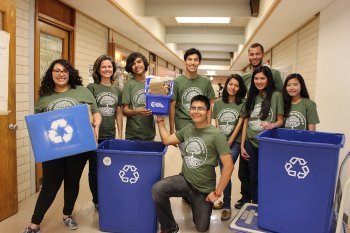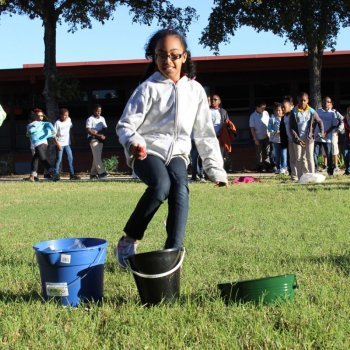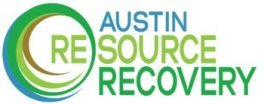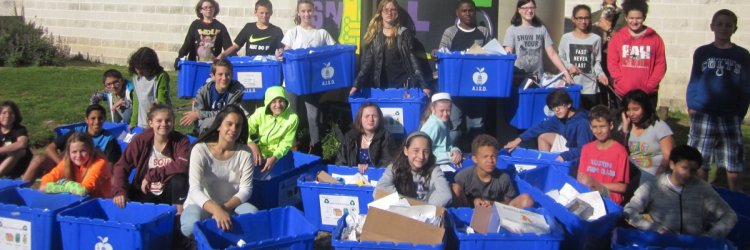 Austin Resource Recovery announced the winning districts of the Austin Recycles Games challenge during this year’s Earth Day celebration. The competition was intended to raise awareness about proper recycling and pitted districts against each other in a friendly competition to see who could recycle more. District 8 was awarded the prize for “Most Overall Recycling”, while District 6 took the title of “Most Improved”. For their respective district’s efforts, Circle C Metropolitan Park and the Spicewood Springs Library will undergo a beautification project.
Austin Resource Recovery announced the winning districts of the Austin Recycles Games challenge during this year’s Earth Day celebration. The competition was intended to raise awareness about proper recycling and pitted districts against each other in a friendly competition to see who could recycle more. District 8 was awarded the prize for “Most Overall Recycling”, while District 6 took the title of “Most Improved”. For their respective district’s efforts, Circle C Metropolitan Park and the Spicewood Springs Library will undergo a beautification project.
The Austin Recycles Games is one of the multifaceted approaches the city is taking to meet its zero waste goal by 2040. The Austin Independent School District (AISD) has been leading the way by adopting zero-waste principles, exercising its purchasing power to introduce recycling and composting into AISD facilities, and working to cultivate nearly 84,000 students and over 12,000 employees to be zero waste leaders.
We sat down with Jennifer Cregar, the district’s sustainability coordinator to find out more.
Q: What is the history of recycling at AISD facilities?
A: Recycling started as a grassroots movement at the schools more than a decade ago. Each school was working independently with waste haulers and had their own contracts and terms. The district knew that if we wanted to affect institutional change, expand recycling options, and get the best contracts, we would need to centralize the process. We secured a contract that introduced single-stream recycling – collecting paper, plastics, metal, and glass – into the schools. About five years ago, we began piloting compost pickup at four schools.
Q: Where are we now?
A: Currently, 100% of AISD facilities, which includes schools, sports facilities, and administrative offices have access to single-stream recycling bins. All of our elementary campuses and several middle schools are composting food in the cafeteria. This means we are helping the city meet its goal of diverting waste from the landfill while educating our students and staff about alternatives to simply throwing things in the trash. We are working on phasing in composting at all of the middle and high schools in the next couple of years and at all other AISD facilities by 2020.
 Q: What are the biggest challenges to having everyone recycle properly? What has been done to solve some of those challenges?
Q: What are the biggest challenges to having everyone recycle properly? What has been done to solve some of those challenges?
A: One of the biggest challenges is ensuring that all schools receive the resources they need to be successful recyclers. Currently, AISD is paying to haul the large recycling, compost and landfill bins away from the school but more funds are needed to purchase small bins for classrooms, hallways, and cafeterias. I have been working with schools to assess how many small bins we have, where they are, and who needs them. AISD recently secured a grant from the Capital Area Council of Governments (CAPCOG). Through the grant, we will be able to purchase more bins for schools that need them.
Another challenge is making sure that everyone knows what can go into the single-stream recycling bins. There is a misconception that we only collect paper. Getting the infrastructure in place is important, but you need the education piece that is tailored to the audience to make sure that the infrastructure is being utilized effectively. I have been working with principals, custodians, teachers, and students to make sure that they know what they can recycle. We have been lucky to have the Generation Zero program that Keep Austin Beautiful delivers on behalf of Austin Resource Recovery to raise awareness of proper recycling. However, there is still limited bandwidth and there is a greater need than supply for education.
Q: What does the future of recycling look like at AISD?
A: The future is bright! Over the past year, the discussions at schools have broadened beyond recycling; schools want to know how to become zero waste campuses. Schools like Small and Fulmore Middle Schools, Sunset Valley Elementary, and Eastside Memorial High School are conducting waste audits to understand what is in their trash and what can be done to sort properly and decrease waste overall.
This shift towards sustainability is an integral piece of the puzzle in helping Austin meet its broader zero waste goal. We are educating our school communities that anything you recycle at school, can be recycled at home and vice versa.
I believe that five years from now, you won’t be able to find a landfill bin standing by itself at any AISD campus; there will be a choice to sort where “waste” goes. My goal is that AISD is the first zero waste district in the state of Texas.
From everything Jennifer described, being the first zero waste district in the state is both ambitious and achievable given AISD’s grassroots and systemic approach. Couple that with Austin Resource Recovery’s initiatives and we are even closer to reaching the City’s zero waste goal by 2040.










